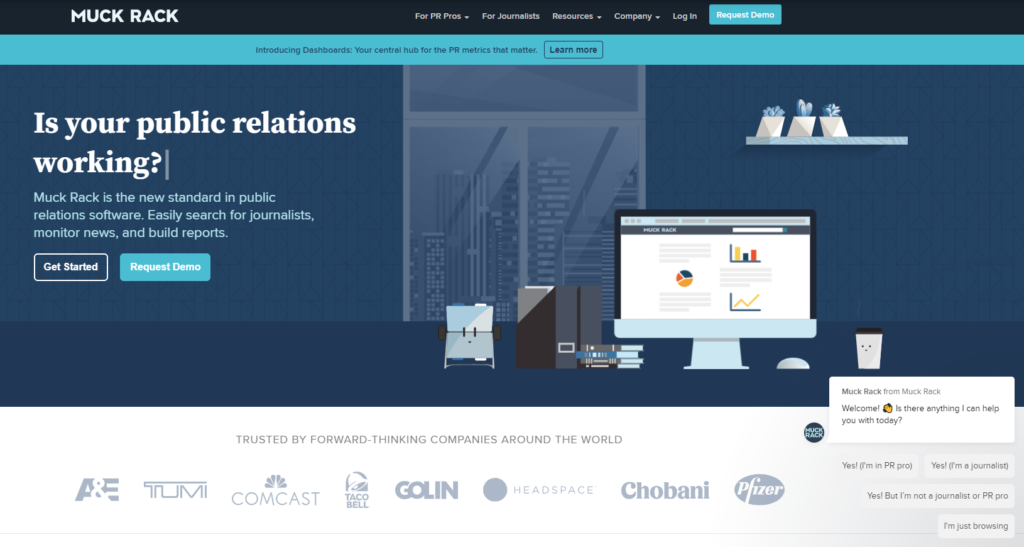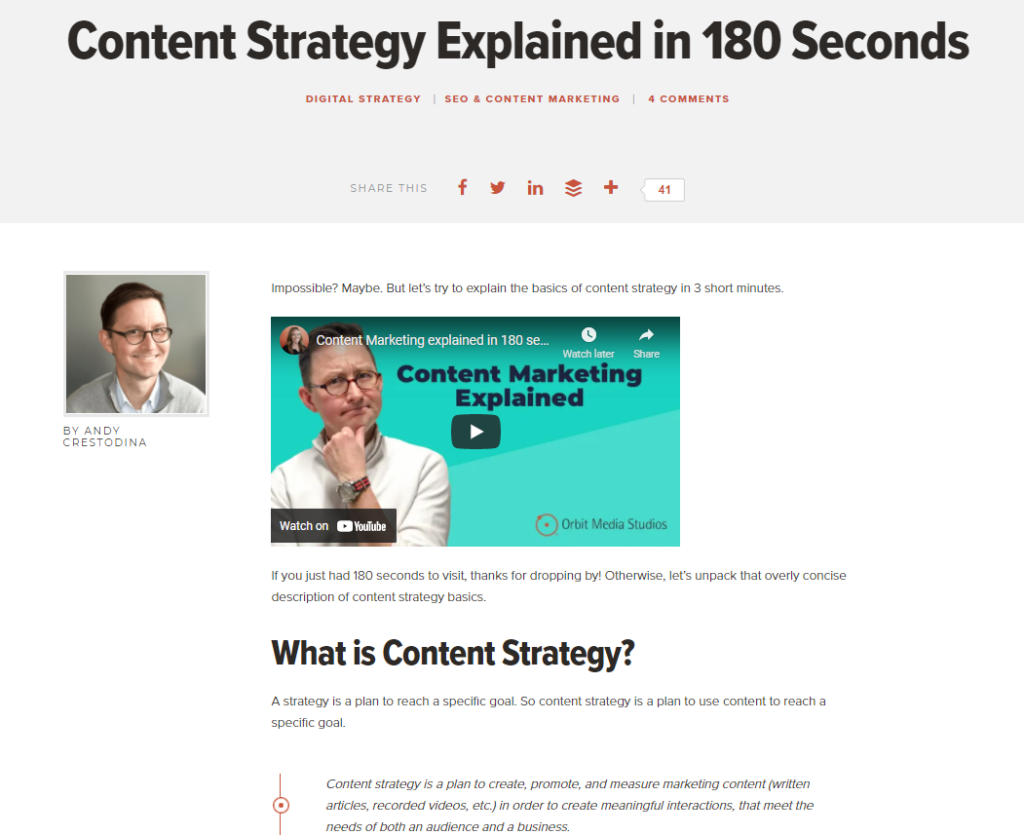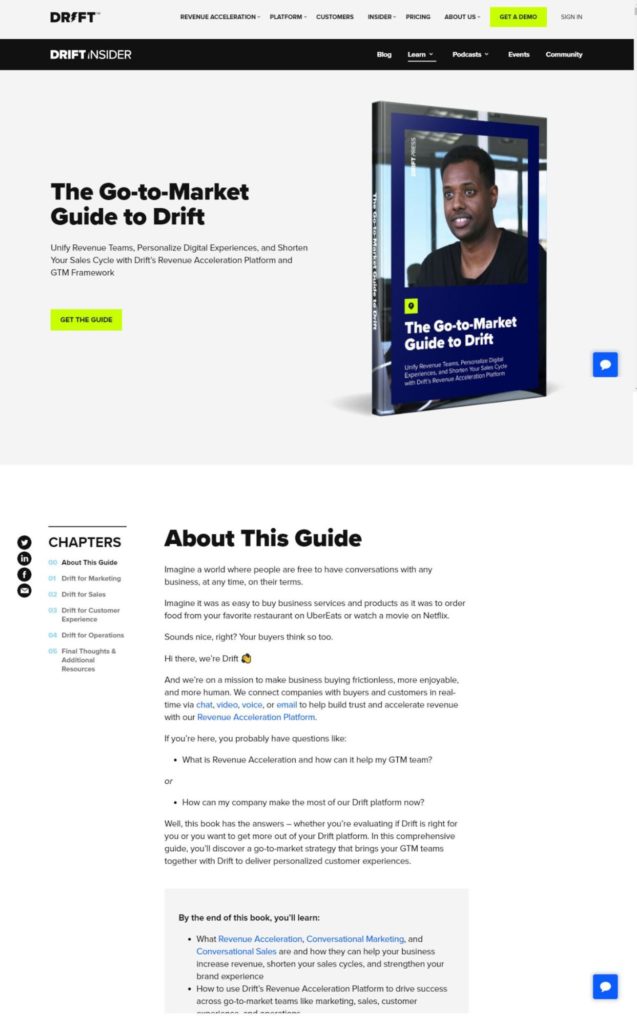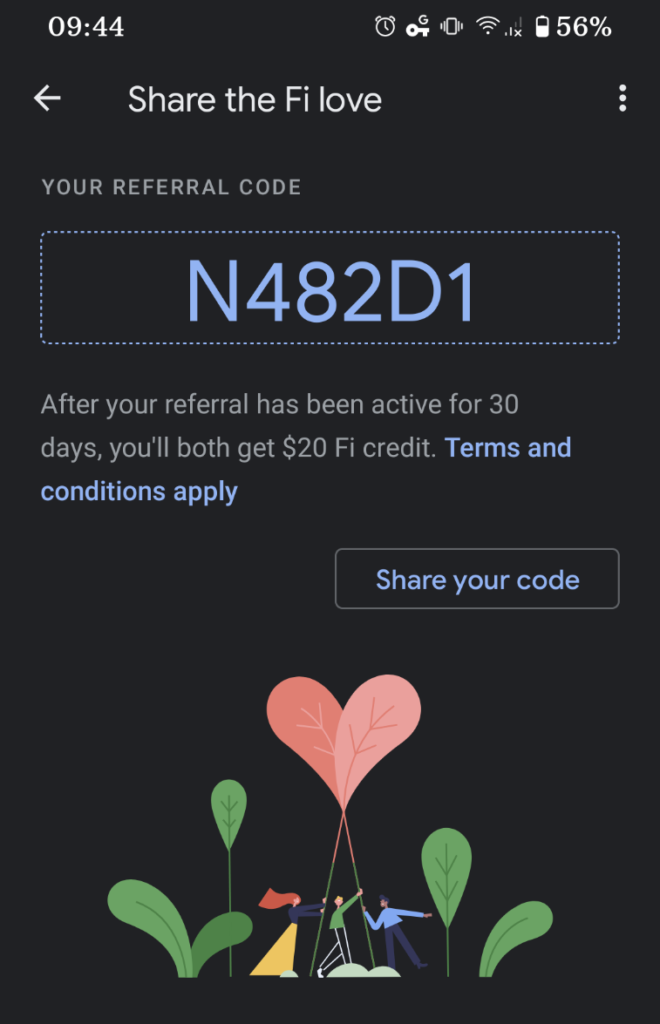Lead generation has, for years, been a primary goal for many marketing and sales teams. This is because the more leads your business can generate, the more sales you make. It is a constant process that needs time and nurturing to maintain a steady revenue flow.
There are countless lead generation strategies that can help bring more customers to your business. However, which strategies will be most effective depends on business goals and products.
In this article
What is Lead Generation?
Lead generation—also referred to as ‘lead gen’—is the process of attracting, engaging, and converting prospects into potential buyers. In other words, you generate leads by trying to convert strangers into someone who might be interested in purchasing your product or service.
But what is a lead?
A lead is someone interested in buying your product but has not made a decision yet. They might have downloaded a whitepaper, submitted a query form, signed up for your newsletter, and so on.
Leads need to be qualified by your sales and marketing teams to determine them a good fit for your business. But you can use lead generation strategies to target the right audience and bring them closer to your business through personalization in marketing and relevant content. Usually, sales and marketing teams work side-by-side to develop such a strategy.
In a way, you are warming up potential buyers by introducing your product or service and showing them how it works. This helps to put them on the path of making a purchase.
Why Do You Need a Lead Generation Strategy?
A lead generation strategy lays out the plan of action your teams will take to drive more leads and traffic to your business. You may decide to produce more content on your website, start a newsletter, boost your advertising efforts, and so on.
These strategies will help you target the right audience and customer profiles, educate them about your products, and convince them to sign up or make a purchase. You can use lead generation strategies to find new leads as well as move existing leads down the sales funnel.
To maximize the effectiveness of your lead generation strategy, incorporating a robust lead generation system is crucial. This system can seamlessly integrate various elements of your plan, from content production to advertising efforts, ensuring a cohesive approach that not only attracts the right audience but also efficiently moves leads through the sales funnel, ultimately driving conversions and business growth.
The benefits of a well-planned and executed lead generation strategy include:
- Improved lead quality
- Increased brand awareness and visibility.
- Expanding your market and customer base.
- Targeting desired customers and markets.
- Collecting prospect and audience information.
- Finding new business and partnership opportunities and boost revenue.
- Increased social following.
- Improved prospect and lead quality.
- Gathering more customer reviews, testimonials, and case studies.
- And, increased sales and profit ratio.
Lead Generation Challenges
Before you decide what lead generation strategies your business should focus on, you first need to consider some common lead gen challenges that most marketing and demand gen teams face:
1. Creating the right strategy
The first hurdle is finding the right strategy, or combination of strategies, that will bring you desired results. What works for some organizations may not work for yours.
To combat this, you will need to research your target audience and markets thoroughly. And you will need to conduct trial and error experiments and testing to help you determine what will work with these targets.
2. Finding the right people, teams, and resources
Next, you have to figure out who can help you achieve these results effectively. You will need buy-in from execs to get started on some of the more demanding and expensive projects. On the other hand, you will need human and technology resources to get the projects rolling. For example, you will need copywriters, designers, and web developers to create effective landing pages.
The right people, tools, and resources can help make your lead generation strategies accomplish your set goals.
3. Funding and managing lead generation strategies
Part of securing buy-in from upper management means getting the funding and resources you need to support these projects. And it can be hard to help execs envision how certain strategies will bring them more leads and sales. You need to sell your case here: How and why do you need to run this campaign? Who is the best person to lead this campaign or team? Getting support is crucial to the success of your lead gen strategy.
4. Tracking and measuring results
Next, you need to track the results that come out of campaigns. If you run too many campaigns simultaneously, it may be hard to identify what is helping the most. Tracking results requires organizational skills and tools. This means additional expenses and time requirements. Prepare for that proactively, so you are not stuck later.
5. Maintaining desired outcomes
Finally, the biggest challenge is to have a steady flow of leads coming in from different strategies and campaigns. This is a tough one as trends change and campaigns need to be updated frequently. But with the right team in place, you can stay on top of changes, track results, and make the right moves to maintain your desired results.
While there are a few challenges involved, being aware of these will help you create a better lead generation process for your teams proactively.
Lead Generation Process
To execute lead generation strategies that work well for your business, you need to pay attention to the lead generation process. How exactly are leads captured? What steps are involved? What options are available for you to use? How can you optimize the process?
Here is a quick overview of the lead generation process:
- A visitor finds your business through a marketing channel (ad, social media, newsletter, website, SEO)
- The visitor clicks a call-to-action (CTA) (sign up or download button or relevant link)
- They arrive at a landing page designed to gather information in exchange for something (offer, free download, discounted consult)
- They fill the form, and you have a new B2B lead.
- Your sales and demand gen teams connect with the lead through cold outreach such as a “thank you for downloading” email.
- While interacting with this lead, the sales rep will identify what stage of the buying process the lead is in.
- The rep will qualify the lead based on how likely they are to purchase your product.
- If the lead is qualified, the rep will nurture the lead, move them down the sales funnel, and convert them into customers.
Now, you can see there are several points where your teams can get involved. For instance:
- You can improve and optimize your marketing channels to get in front of the right audience with lead generation tools.
- Then, you can create effective CTAs that encourage your visitors to sign up or download.
- Then, you can design landing pages that promise value and information security. Here is where you have to convince your visitor to provide their information.
- Next, you can train your reps in lead qualification and nurturing to convert more leads into customers.
- And, you can assign customer success managers or account managers to take care of these customers even after they buy.
Your lead generation strategy should take these different stages into account so that you can convert more visitors into leads. But how do you do that? Let’s have a look.
How to Build a Lead Generation Strategy?
There are a few different factors to keep in mind when using lead generation strategies for your business. Both B2C and B2B lead generation strategies include the following six components:
1. Lead Capture
To stay on your visitor’s radar, you will need to capture some of their information, known as a lead capture. This could be their name and email address. This is enough to stay in touch with them via your newsletter or promote new products and discounts.
The next time they visit your website, you may ask for additional qualifying information such as business name, position, or business size. This helps you further understand this lead and qualify them.
However, not everyone is willing to provide their information all the time. So, you need to make it worth it and, as a rule of thumb, you should:
- Give before you ask, and
- Make every part of the marketing process valuable.
Then, follow through by providing valuable and relevant content and not spamming their inboxes.
If a visitor trusts you with their email address, make sure you respect that trust and email them relevant information and updates. Most customers do not hesitate to unsubscribe when they receive irrelevant content and feel like you are spamming them.
2. Lead Magnet
Lead magnets are incentives that further drive interested prospects into becoming qualified leads. With most lead magnets, you want to provide a valuable piece of content that convinces the prospect to move down the pipeline. Some common lead magnets include:
- Webinars, tutorials, and training videos,
- Newsletters,
- Whitepapers, ebooks, and guides,
- Samples or free trials,
- Thought-leadership content and expert interviews,
- Free consultations and product demos, and the likes.
You can use these tools to establish your organization as an expert resource and authority in the field. And when your customers need a service like yours, they will remember your company’s name.
3. Landing Page Conversions
The biggest asset you can use to convert more customers is high-quality landing pages. This is the page customers land on after clicking an ad, social media link, or other promotional elements. And it is here that they will go the next step and sign up for your service or make a purchase. Landing pages exist outside of your company’s website and are used for single campaigns. So, you will need multiple landing pages for different campaigns. This also helps track each campaign efficiently.
4. Lead Qualification
Lead qualification is the process where your reps use the lead’s information to determine how likely they are to buy. In other words, they determine the quality of the lead. Is this person here to buy? Are they the primary decision maker? Are they here only for the content? And so on. High-quality leads are your ideal customers and they will need more nurturing.
5. Lead Segmentation
By segmenting your leads, you can create more relevant marketing funnels for each segment to move them closer to making a purchase. Here, your teams can segment leads based on their information, habits, and activities such as:
- Job title
- Region or location
- Lead magnet that attracted them
- Pages they visited on your website
- Content they downloaded, etc.
Remember, not every marketing campaign works for every lead. This information can help you develop more relevant campaigns.
6. Lead Scoring
Finally, once you have your leads in place, you will want to use lead automation software to score your leads. This is similar to lead qualification but goes a step further. It scores leads based on the number of interactions and level of customer engagement. This helps your team prioritize high-quality leads and gives you real-time feedback on the effectiveness of your marketing campaigns.
17 Lead Generation Strategies
Taking the time to create and follow a lead generation strategy can go a long way in securing new clientele for your business. You can try various methods and techniques, but not all may apply to your business. Additionally, not all may be necessary to generate the optimum amount of traffic and leads.
Doing everything, all at once, can be more harmful than helpful. And it will be hard to track where the results are coming from. Try a few, give them time to work, study the results, and then try other strategies, if necessary.
Here are the top lead generation strategies to consider:
1. Understand Your Market
Market research is crucial to understanding your target audience and how to best appeal to them. You can conduct market research through one-on-one interviews via phone, email, or in-person. You can even run short online surveys that you send out in newsletters, advertise online, or highlight on your website and social profiles.
When you research the market, you can gather information such as:
- Where your target customers shop (online or in-person)
- Where are they looking for products and services like yours
- How do they conduct research for their purchases
- What factors are important to making a purchase decision
- What social channels they use
- When do they do their shopping
- What are their communication preferences
- What are their expectations, and so on.
You can use this information to inform your lead qualification process further and identify high-quality prospects. You will also find new ways to market and sell to these prospects.
2. Global Sales and Support
Another popular lead generation strategy is to target different countries and regions. If your product or service can be sold online and shipped internationally, then you should definitely put effort into generating leads from other regions. To do this, you will need to:
- Create multi-country campaigns to promote your business internationally,
- Use international SEO techniques to rank well in global search engines,
- Create country-specific web pages and content to highlight products and services,
- Use international phone numbers to communicate with leads,
- Hire remote employees in these locations for sales and support.
3. Make Your Business Easy to Reach
Nothing is worse than an interested prospect who wants to make a purchase but cannot contact your business for last-minute queries. Offer leads and interested prospects multiple ways to connect with your business. Common communication channels include phone, email, live chat, chatbots, social media accounts, text messaging, and video. Your business may not need all of these channels, but the more, the better.
4. Create Beautiful Landing Pages
Your landing pages are where most of the conversion happens. A well-designed landing page is a great lead generation tool as it convinces a prospect to sign up and become a lead or customer. Therefore, you need to design attractive and accessible landing pages with easy-to-follow actions. Top landing page best practices include:
- Clear call-to-actions (CTAs).
- Keep the content to a minimum, highlighting key points.
- Live chat option.
- Keep important information above the fold.
- Focus on benefits to the end-user instead of pointing out features.
- Solid lead generation form designs.
- Match the messaging on your ads and pages.
- Add valuable and relevant visuals.
- Write conversational and skimmable copy.
- Focus on a single conversion goal instead of including multiple goals.
- Remove navigation links and other distractions.
- Optimize for page speed and mobile screens.
- Keep design principles in mind.
- Drive traffic from social profiles.
- Test your landing pages with A/B testing.
- Update frequently.

5. Optimize Your Website and Social Profiles
To generate leads for web visitors, you need to lead them to the right lead magnet on your website or social profiles. Prospects have different customer journeys that lead them to sign up or make a purchase. Your goal is to make it easy for them to find what they are looking for.
For websites:
A good practice is to study your web visitors, their demographics, jobs-to-do, preferences, needs, and so on. Then, segment your audience and create funnels that would lead them to the lead magnet most relevant to them. For example, some may only want your weekly newsletter for valuable content, while others may want to develop a partnership with your company.
Common lead magnets are “free trial sign up” or “watch a demo” buttons. But you can get creative here based on what you are selling and what you’d like your web visitors to do.
For social media:
Your social media marketing campaigns can bring more leads to your business. When you want to attract attention to a valuable lead magnet, highlight and promote it in your social networks. Write compelling copy and include clear next steps to make it easy for viewers to follow. Leverage CTAs with links to the lead magnet instead of the homepage.
6. Embrace Video
If you are not already using video content, then this is a good time to start. There is a lot you can do with video. We’re talking about:
- Webinars
- Tutorials and how-tos
- Product demos and features
- Animated visuals
- Company highlights, and so on.
According to a report by Animoto, video ads are the #1 way prospects discovered a brand they later purchased from. This makes video content highly relevant and effective in generating leads, even if it is a slow game.

7. Write and Run Good Ads
It is also a good idea to run ad campaigns frequently. You can run ads on search engines (Google, Bing) or social media platforms (LinkedIn, Facebook, Twitter). By bidding and running high-intent, keyword-rich ads, you can get your business in front of millions while they are web-surfing and looking to make a purchase.
Additionally, you will also benefit from running a remarketing campaign where visitors who have previously visited your website will see ads for your services when browsing Google or partner websites.
8. Go Big with Content Marketing
Content marketing is a major promoter of any business. You can run a blog or weekly newsletter and write content that shows potential customers how to use your product or service to accomplish tasks.
There is a lot of competition for almost everything online. So, to get in front of your audience, you need to write compelling content and rank well in search engines. This is where content marketing and search engine optimization (SEO) proves useful.
Content marketing can help your business appear and rank in search engines for relevant keywords and phrases. This way, interested prospects looking for products like yours will find your business when searching online.
But SEO is a bit of a long game. You will need an effective content strategy to generate content that promotes your business, fights your competition, and ranks in search results.
9. Run a Relevant and Informative Newsletter
Another popular lead generation strategy (and also an effective lead magnet) is creating a quality newsletter. Prospects interested in your business but still need nurturing will find this newsletter helpful in making a decision.
The key is to offer relevant content that helps readers learn more about your business and what you have to offer. You can include:
- New blog posts and how-to articles,
- Updates about your products or services,
- Special offers and promotions,
- Upcoming events and webinars,
- Articles by other thought leaders in the industry.
This content can bring them closer to signing up for your service or making a purchase.
10. Offer Gated and Ungated Content
While offering tons of gated content seems like an effective way to capture leads, it is a good practice to offer both gated and ungated content. Asking visitors to sign up for every single thing can become more frustrating over time. Choose your most valuable resources and convert only those into gated content. Think:
- Research reports,
- Long-form ebooks and guides,
- Courses and on-demand webinars,
- Online tools, and so on.
On the side, offer relevant and helpful ungated content that interested readers can find on your blog or newsletter. In fact, with some long-form content, you may offer readers the choice to read the whole article or download a PDF version in exchange for an email address. This way, readers can choose to read it online or download it to read it later at their own pace. This builds trust and value for the content you provide and increases the chances of these readers coming back for more.

11. Create Value-Packed Opt-in Opportunities
One of the more popular lead generation strategies is leveraging opt-ins. Opt-in opportunities can really demonstrate your business’ expertise and credibility. Giving web visitors and potential leads valuable material brings them one step closer to getting to know your services and becoming a customer. Most popular opt-ins include:
- Webinars and tutorials
- Downloadable content and resources (worksheets, guides, brochures)
- Live demos
- Downloadable transcripts and slides
- Annual reports and research
- Giveaways, etc.
Host events, webinars, and conferences to not only build your business’ presence and visibility but to draw relevant leads to your business. This is because those attending your event or webinar are interested in the problem or solution you are discussing. And this becomes an excellent opportunity to show them how your business can help solve said problem. These will be leads who are relevant to your business and would be easy to qualify.
12. Always Test and Improve
Whatever you put out there — new landing page, email newsletter, promotion, or feature — always test it. What may work for one business or one client may not work for another. While there is a lot of content about best practices on the internet, not all of it may work for your business’ exact situation.
Therefore, you need to understand how your target audience responds to certain words, images, or actions. Run A/B tests for marketing campaigns, landing pages, UX signals, CTAs, button copy, subject lines, and so on. This will help you better target leads by improving your content’s relevancy, usability, and attractiveness.
13. Consider Conversational Marketing and Chatbots
As they become more commonly used, chatbots are proving to be a great lead generation tool. You can have the chatbot book meetings, offer relevant content, take a message, connect the visitor to an employee, and so on. Customers may hesitate to interact with a chatbot that is more AI-like — they may not trust the bot to help them with their queries.
But with conversational marketing, you can make your chatbots more human and intelligent with targeted messaging. This makes it easy for visitors to engage with your website and find what they are looking for.
Conversational marketing leverages the power of real-time conversations to convert visitors into leads and leads into customers. Chatbots — combined with conversational AI and your brand personality — can build rapport with web visitors and gradually move them down the funnel. Chatbots function 24/7, making it possible for your business to generate new leads even during after-hours.
14. Make Irresistible Offers
One of the long-lived marketing techniques that continues to attract new customers is must-have offers. Think: limited-time-only coupons, discounts, and promotions. You can even run membership and loyalty programs that provide additional perks and benefits. Promoting these programs can help convert those sitting on the fence and needing a slight nudge.
15. Offer Freemiums or Free Trials
Another good way to get more qualified leads is by offering freemiums or free trials. These attract interested prospects who want to give your service or product a try before committing. You can nurture these prospects by teasing paid or premium features and showing ways that they can benefit from upgrading their service.
16. Referral Rewards System
In a referral rewards system, your existing customers bring you new customers in exchange for discounts or credit. Your brand advocates and loyal customers are the best people to convince others like themselves to sign up for your service or purchase your product.
They have used it and stand by its value and usefulness. And a referral rewards system lets you take advantage of these customers and gives you an opportunity to retain them. Who wouldn’t want discounts and freebies?

17. Affiliate and Co-Marketing Initiatives
Finally, you can use brand partners and affiliate marketing to get the word out about your products and promotions and attract more leads. This is because, with affiliate marketing and relationship-building, you not only get recommended from a valuable partner but also gain access to new customer bases.
Conclusion: Find Lead Generation Strategies for Your Business
As we mentioned earlier, not all of these strategies will work for your business and customers. There will be a trial and error period before you find the right cadence. But that shouldn’t stop you from getting started.
Start with the top lead gen strategies and gradually expand your efforts. Give each strategy time to work before you decide to move to the next one. Before you know it, you will have a better idea of what works for your customers and how to best engage them!



